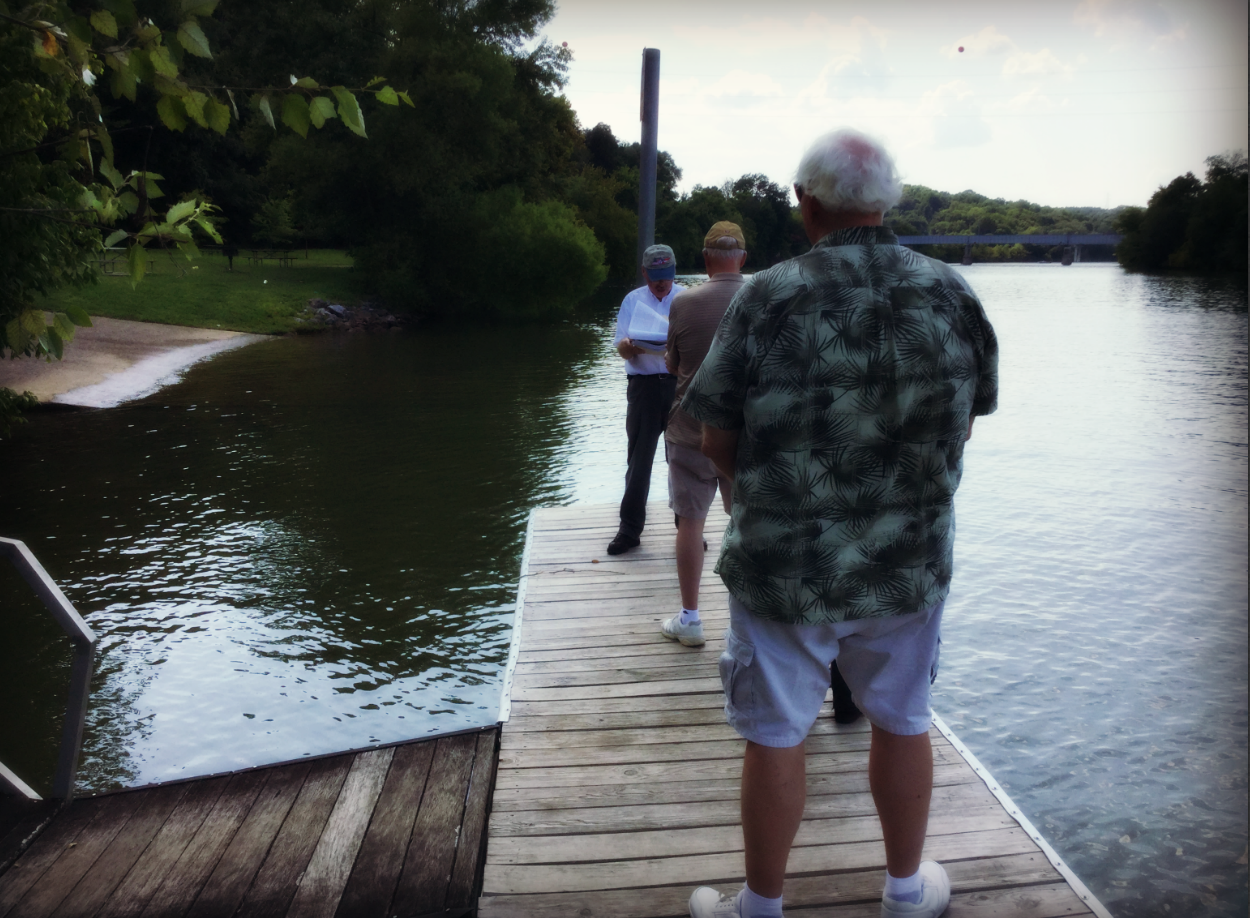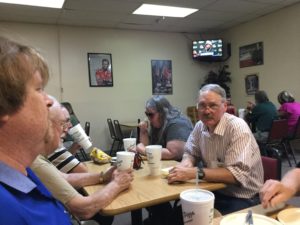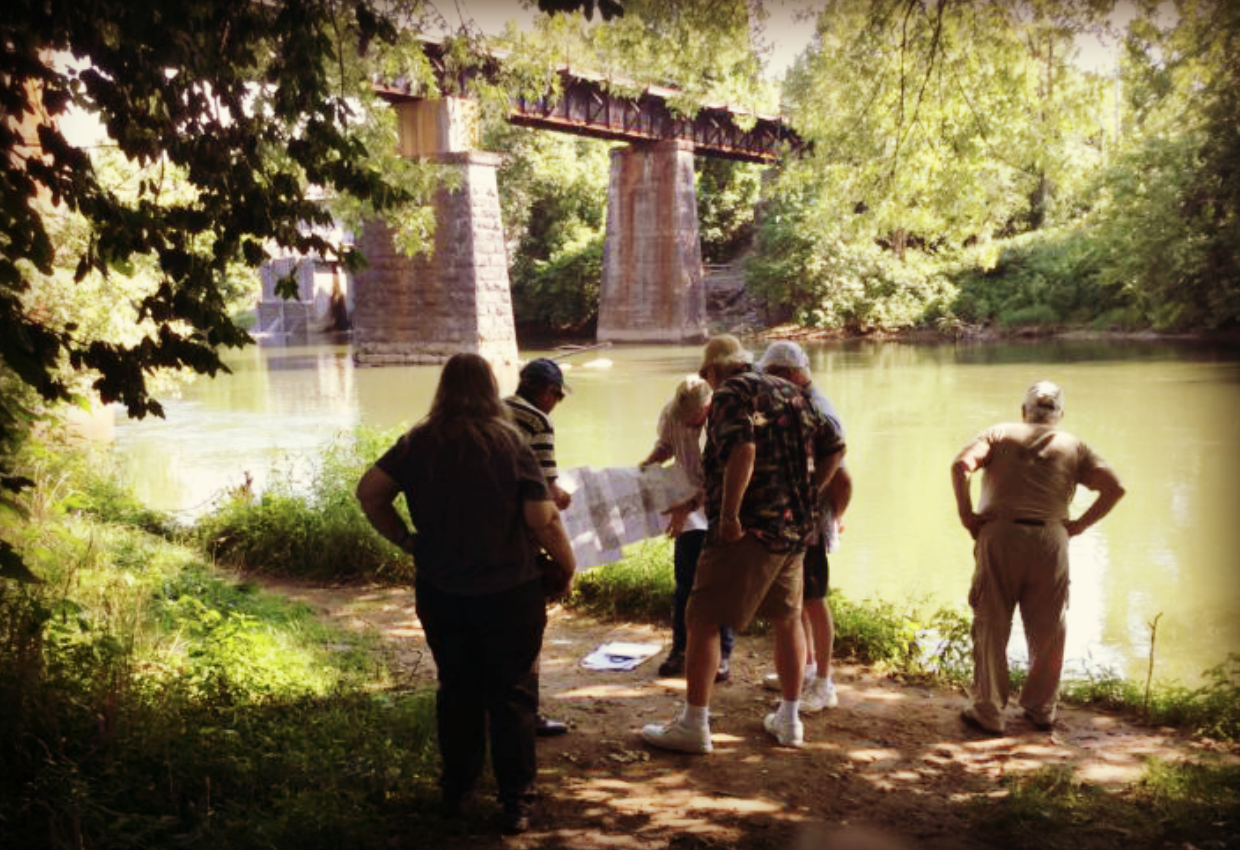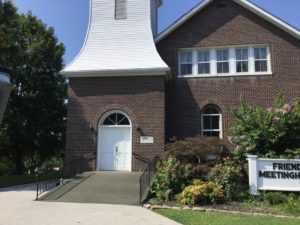Most of the time, BGES Executive Director Len Riedel is tirelessly working to plan and execute BGES’ large and diverse organization and programs. This time, he took the back seat—literally—on a recent Field University program—A Test of Loyalties: East Tennessee Raids, Railroads, and Rebellion, which took place July 24–27, 2019, with military historian Jim Ogden leading. Here’s what he saw.

Day One
Our theme was East Tennessee, which is a special interest of Jim Ogden’s. Our cohort originally was seven, but two late cancels fit us into the BGES van. My opening remarks noted that it is programs like this, unappreciated and undone by tour groups, that make us an educational organization unmotivated by profits. Jim’s opening lecture discussed the argument that this was a railroad war and postulated that, while it became one, it started as a river and water fight. The glue to the theme was the movement of supplies and the commerce of both the North and South. The “brother versus brother” element was particularly noteworthy where farmers and merchants had more interest in their livelihood than larger nationalistic goals. Jim noted that, ironically, the “unionist” residents forgot that the large cotton and sugar cane plantations created demand for the foodstuffs of the hardscrabble areas of East Tennessee.
In summary, the expansion of the railroads in the 1850s created strategic transportation networks that supplemented and replaced river networks. Trunk lines across the country allowed inland farmers to get foods to market faster and across a wider range of venues. This tour will talk about the great trunk line through eastern Tennessee that connected the northeast with New Orleans.
Day Two
Long day…. Cavalry tours and transportation themes like railroads suggest lots of miles, and our trip up to northeastern Tennessee was that. Our trip to Greeneville focused on the rising influence of Andrew Johnson. Long maligned for his impeachment, we had substantial conversations about the constitutional role of the Vice President starting with John Tyler, and congressional resistance to accepting an unelected president. The term “acting president” came up, and the ramifications of the 1867 Tenure of Office Act. It threw us an hour behind, but was very stimulating. My thought and input was that Johnson must have been mighty important to be elevated to the national ticket in 1864.

The balance of the day, punctuated by an ad-hoc lunch stop at Rocky’s Pizza, was to discuss the 1861 plan to burn trestle bridges along the Virginia and Tennessee Railroad in cooperation with a move of Union troops from Kentucky into East Tennessee. The arsonists acted but found that, at last minute, General Sherman withheld his approval for subordinates to move in support. Successful attacks destroyed key bridges disrupting train traffic for months at a time, but forced the arsonists to go to ground. When identified, a number were summarily hanged.
I was struck that while there were no loud battles and massive casualty lists, real strategic operations were going on. This is real brain salad. I highly recommend this type of intellectual flossing. I think we learn much. We returned over two hours late yet kudos from the cohort.
Day Three

As we headed south on Friday through the heavily timbered woodlands, the magnitude of the bridge-burning operations came clearly into focus. November 8, 1861, called for simultaneous operations against key trestles from the extreme northeastern portion of Tennessee into northern Georgia and northeast Alabama. We focused on the most successful operations along the south bank of Chickamauga Creek. The steep banks clearly demonstrated the dramatic operational impact the bridge burnings created. In 1863, Braxton Bragg was so concerned about the vulnerability of his rail communications that he deployed Patrick Cleburne’s division to protect it. It was that assignment that put Cleburne in position to turn back Sherman’s subsequent attacks along northern Missionary Ridge.
Day Four
There is a coarse symmetry to the war in East Tennessee. While we have focused on bridge burning and the November 1861 operation, there were additional raids in the region. We finished at Strawberry Plains on the banks of the Holston River, where in June 1863 Union soldiers torched the railroad span there and elsewhere.

As we moved around Knoxville we found the town of Friendsville, Tennessee, which was named after the Friends (Quaker) meeting house constructed there in the 19th century, here was a station on the Underground Railroad which helped move escaped slaves toward Ohio. While there, Kirk Hinman shared with us that his great-great-grand-uncle had written the Christmas carol “Away in a Manger.” You never know.
It was a real treat observing and participating in the tour from the second row of client seats. I am a big boy, as were several others. The empty seat in each row helped everyone be comfortable. The air-conditioning kept the climate comfortable and the PA system kept everyone in contact with Jim’s priceless narrative. Host Burford Smith had the van fueled and ready, parked in the shade, and charged with ice cold water. A good time was had by all.
—Len Riedel
